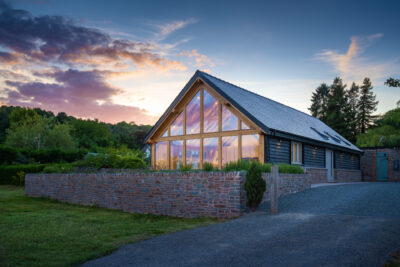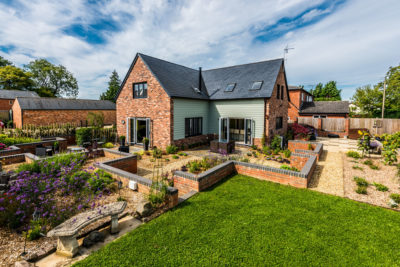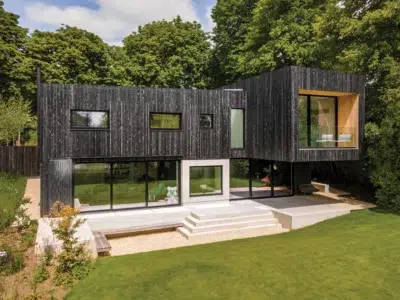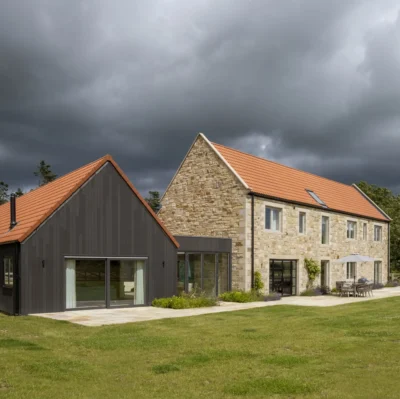How Green is Offsite Construction?
In addition to its speed and quality advantages, offsite construction is growing in popularity as a green, sustainable approach to delivering new houses. What’s more, offsite manufacture has the potential to dovetail with the goals of many self builders.
One of the biggest benefits of self building is that you can plan the sustainability of the finished result. That applies in terms of the green materials and systems that have gone into making it, the carbon footprint of the construction process and how energy efficient the building is to run once constructed.
Most package home routes, for instance, see a large portion of the property fabricated offsite in a supplier’s factory. This means it’s easier to have a great degree of control over the supply chain and build accuracy in comparison to onsite methods like brick and block.
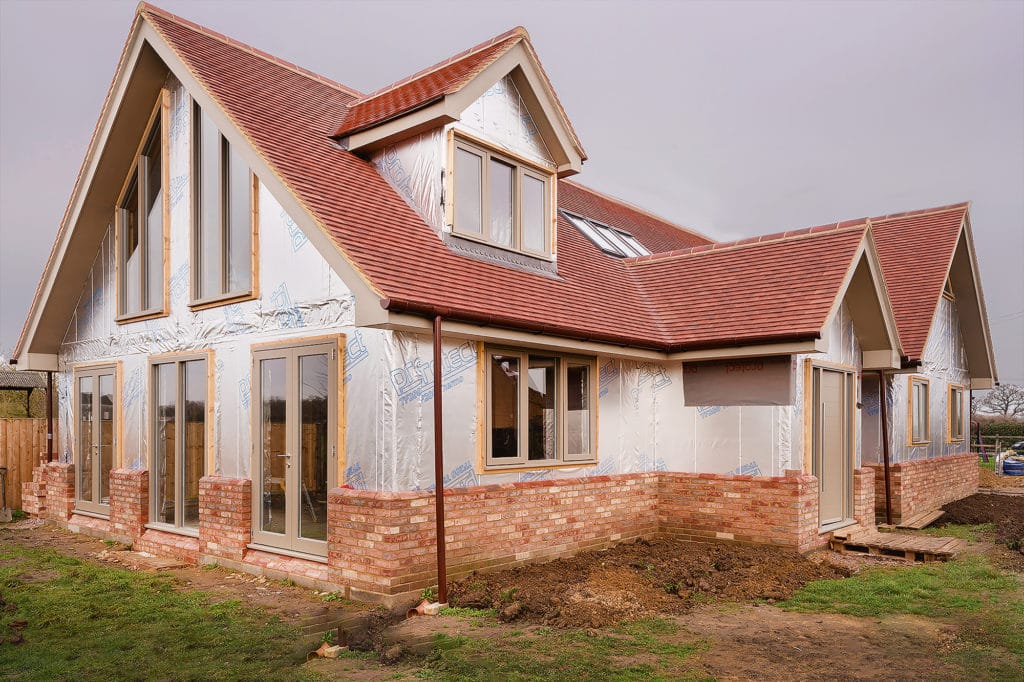
This new home features an offsite manufactured weathertight shell by Kingspan Timber Solutions
What makes offsite construction sustainable?
A key sustainable advantage of offsite construction is that it offers significant reductions in the embodied energy of the build. Here’s how:
- Offsite factory production of the components means there is less material wastage, plus offcuts can be used in the next section of the process or for another build. The exact amount of each component required is carefully calculated, so there’s no need to over-order to account for cutting or accidental damage as you would with site-based construction methods.
- Fewer trips to your building plot from different trades means travel is reduced. The structure will need to be delivered on a truck and craned into place, but the impact of this should be balanced on how much transport has already been saved by having it manufactured offsite. Not to mention the reduced impact on your neighbours as well as the adjacent roads.
- As you’ll be employing a specialist in structural fabrication, they will be experts in the system they use. So you can expect transparency and traceability in the supply chain of materials going into your build, which can further enhance your ability to go green.
- Many package firms understand the benefits of healthy materials and the desire for sustainability when self building. You can look to choose a system that uses recycled materials, for instance. Most companies offer options in terms of how far you want to go with your eco ambitions.
FIND AN OFFSITE CONSTRUCTION SPECIALIST
Offsite construction and energy efficiency
Another benefit of factory production is that the energy efficiency of the finished home is far more guaranteed than with onsite construction.
A timber package supplier is likely to specialise in a specific type of structural system, which will be a tried and tested method that they’ve perfected – so you should be able to expect the house to perform as agreed in the design stage.
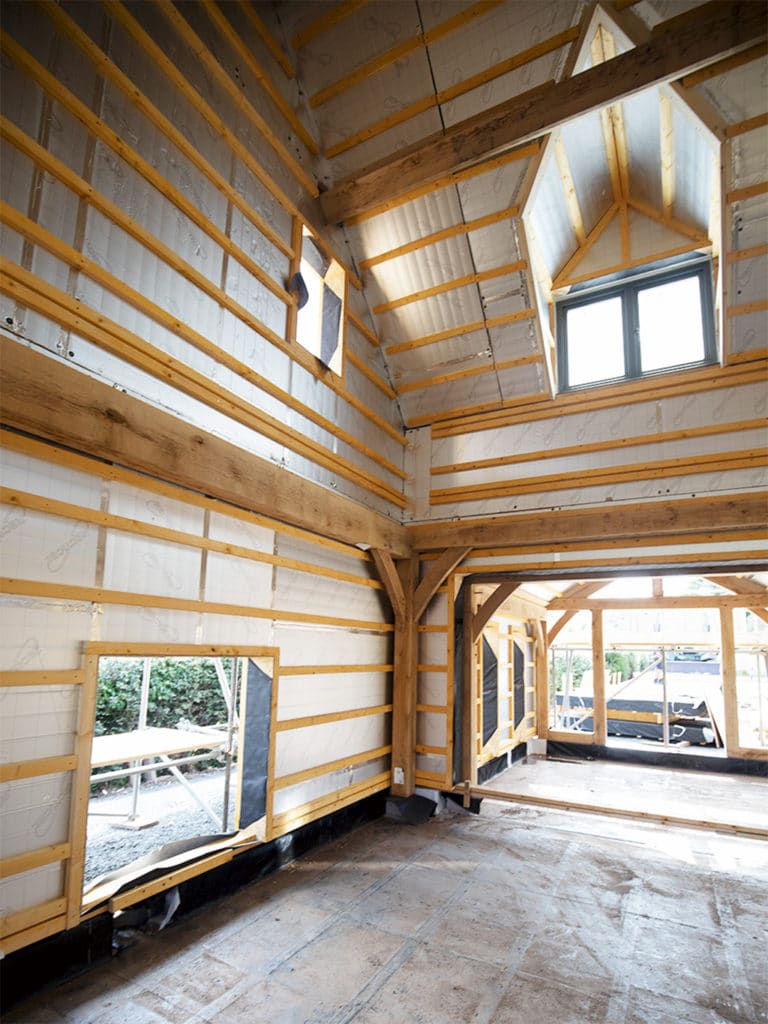
This project by Oakwrights uses components manufactured in their workshop
Controlled factory conditions also eliminate the risk of mistakes on site, meaning jobs won’t need to be completed twice – something that often causes waste with site-based methods of construction. Fewer suppliers and trades will be needed, too, so there’s less chance of miscommunication between them.
Choosing an offsite system
Timber is the most popular offsite construction material. Systems such as closed panel timber frame and structural insulated panels (SIPs) are technically advanced options offering an easy route to excellent levels of insulation and airtightness.
Methods and materials like green oak framing or engineered elements such as glulam beams and cross laminated timber (CLT) panels can also underpin your eco credentials.
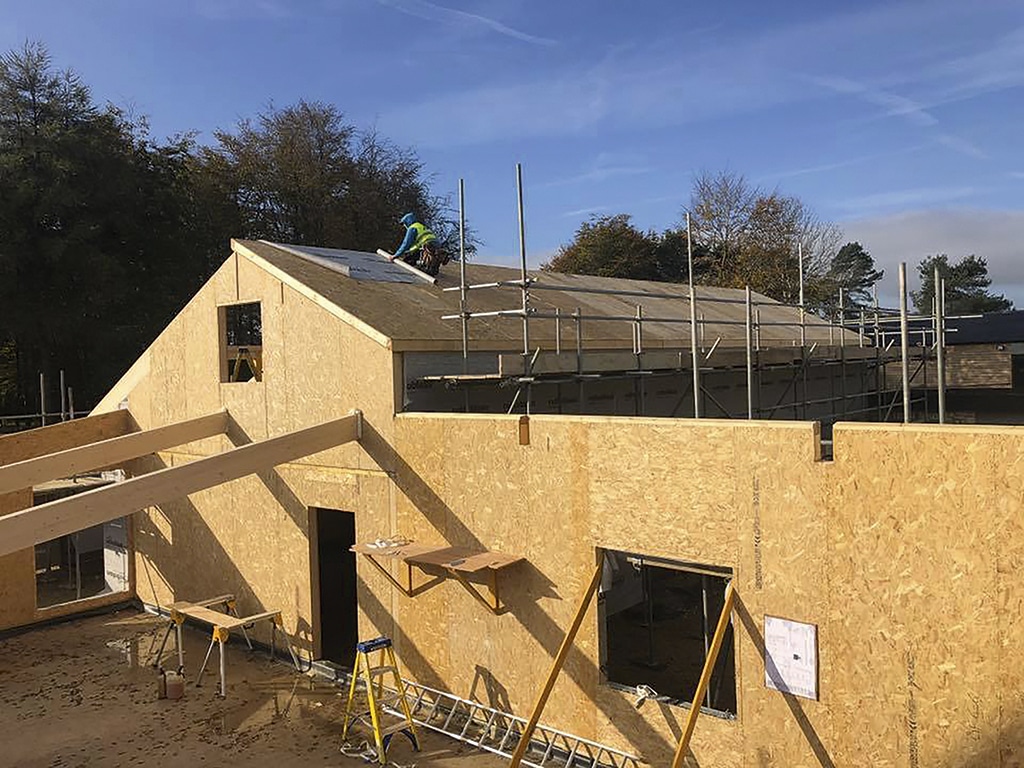
Structural insulated panels by Glosford SIPs being installed on site
Wood is inherently a low-carbon material as it is natural and can be regrown – look for FSC chain of custody certification for peace of mind that the highest environmental standards are being followed.
If you’ve gone for a factory-insulated system, such as SIPs or closed panel timber frame, then you can more or less predict the exact thermal efficiency of the structure. Plus, if you’re using a package firm, the weathertight shell installation will be taken care of by a specialist team. These site operatives will be well-rehearsed in assembling it on site and know what needs to be done to get the required result.
Who should build my offsite-manufactured home?
Choosing an STA accredited supplier means that you will benefit from the research the association has already done into how a company practices – offering reassurance and the evidence required to make informed decisions.
As the UK’s leading representational organisation for the structural timber sector, all members go through the rigorous and independently assessed STA Assure Membership and Quality Standards Scheme.
The STA Assure quality scheme has received formal recognition from leading self build finance organisations, the NHBC and six of the industry’s leading structural warranty and building control bodies, ensuring that STA members meet current legislation and regulatory requirements.
Main image: Shortlisted in the 2020 Build It Awards Best Offsite Manufactured Home category, this project by MBC Timber Frame features a host of sustainable credentials
| There is a wealth of information on the STA’s website to help with your self build project, from advice on offsite timber construction systems to market reports and top building tips, together withan online enquiry system to contact individual suppliers. |

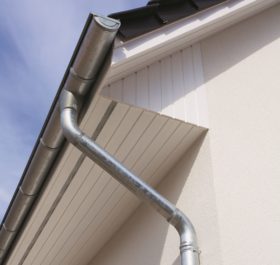
































































































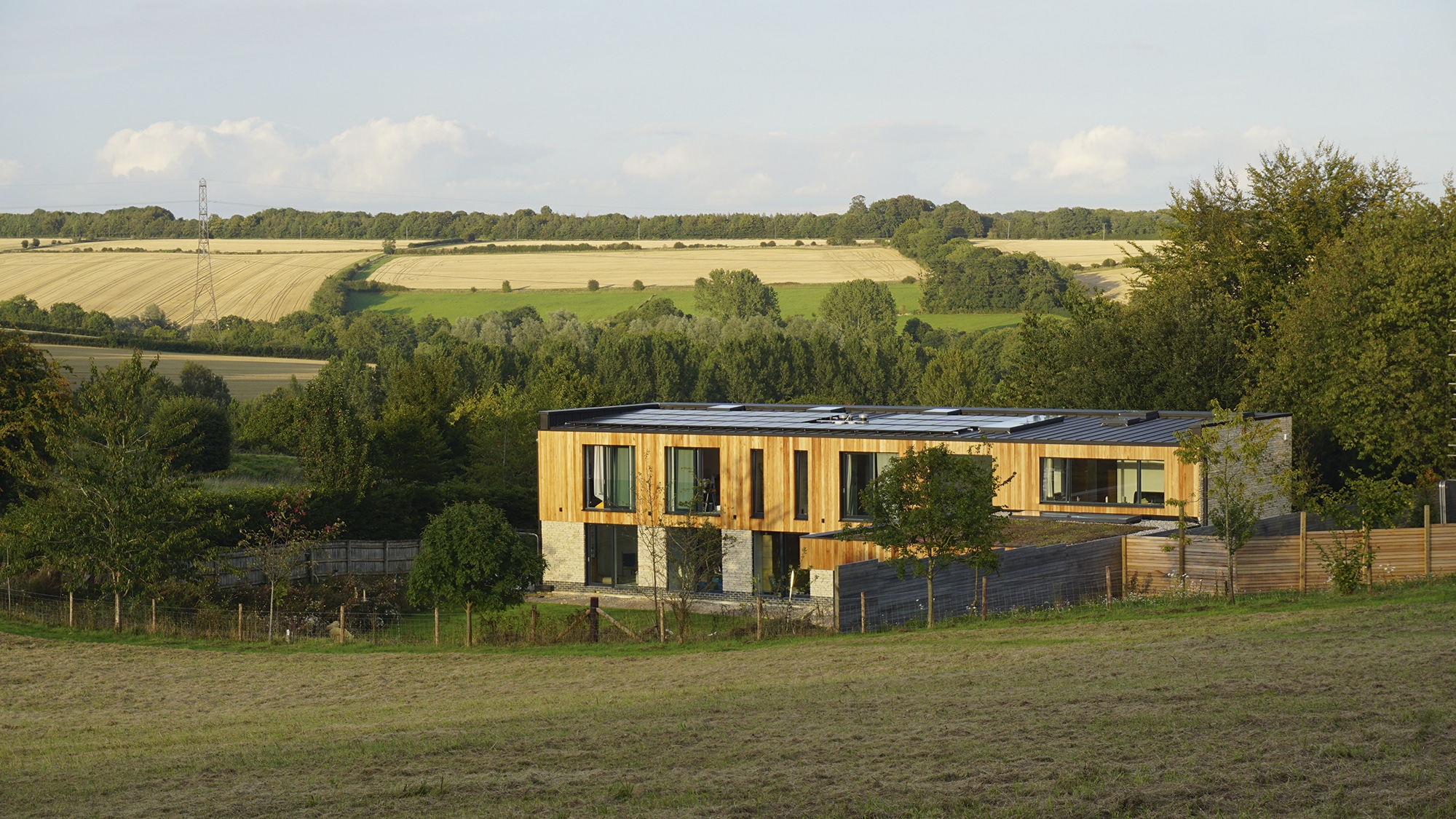
 Login/register to save Article for later
Login/register to save Article for later




